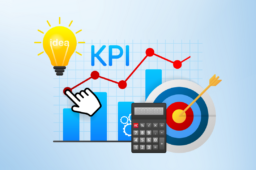
Forecasting in Project Management: Essential Techniques for Better Planning
- September 10, 2024
- by
- tehreem
In today’s fast-paced project management environment, achieving success is no longer just about meeting deadlines and staying within budget. It’s about foreseeing obstacles, managing resources wisely, and staying ahead of the curve. That’s where forecasting in project management plays a pivotal role.
Project managers often find themselves blindsided by unexpected challenges—whether it’s cost overruns, resource shortages, or timeline delays. Without a clear understanding of potential risks and opportunities, projects can quickly spiral out of control.
But what if there was a way to see potential issues before they arise? What if you could anticipate risks and effectively plan your project timeline, resources, and costs based on predictive insights?
Forecasting in project management offers exactly that. By leveraging historical data, trends, and advanced tools, you can ensure better planning and improve project success rates. According to the Project Management Institute, poor planning accounts for 28% of project failures . Accurate forecasting techniques can mitigate this, helping project managers avoid pitfalls before they occur.
Key Forecasting Techniques in Project Management
1. Historical Data Analysis for Forecasting
When it comes to project forecasting, analyzing past project performance is key. By reviewing historical data, project managers can identify patterns and trends that inform future decisions. This data can include everything from task completion times to budget overages.
Research shows that organizations using past project data improve their project success rate by 25% .
2. Trend Analysis and Its Importance
Trend analysis allows project managers to predict outcomes based on the current trajectory of tasks and resource usage. For instance, if a project is consistently behind schedule, trend analysis can help identify bottlenecks and provide data-driven insights into possible future delays. This method not only offers real-time insights but also helps project managers adjust plans before it’s too late.
3. Scenario Planning for Risk Mitigation
Scenario planning is a powerful technique that prepares project managers for the unexpected. By creating multiple “what-if” scenarios, project managers can forecast potential risks and develop contingency plans. This approach helps teams prepare for best-case, worst-case, and most-likely outcomes.
When businesses use scenario planning, they reduce risk exposure by 30% .
4. Resource Forecasting: Optimizing Project Resources
Resource forecasting helps project managers allocate the right resources to the right tasks at the right time. Effective resource allocation is essential for balancing workloads and ensuring the project is completed on time and within budget. By forecasting resource needs in advance, managers can avoid the common issue of overworked or under-utilized teams.
Advanced Forecasting Tools and Methods for Project Management
1. Using AI and Machine Learning for Project Forecasting
With the rapid advancement of artificial intelligence (AI) and machine learning, forecasting in project management is becoming more accurate and efficient. AI tools can analyze vast amounts of data to generate predictive models, improving project outcomes by identifying trends and predicting future events.
A study by Gartner found that AI-enhanced project management can boost forecast accuracy by up to 35% .
2. Monte Carlo Simulation in Forecasting
Monte Carlo simulations allow project managers to predict the probability of various outcomes. This technique uses randomness to simulate multiple project scenarios, offering a range of possible results. It’s especially useful when dealing with complex projects where uncertainty is high.
3. Earned Value Management (EVM) for Accurate Forecasting
Earned Value Management (EVM) is a forecasting technique that helps monitor project performance by comparing planned work with completed work. EVM gives project managers a clear picture of whether a project is on track or not and provides insights into potential future delays. Projects using EVM have a 55% higher likelihood of meeting deadlines and budgets .
4. Financial Forecasting for Project Budgeting
Accurate financial forecasting is crucial for managing project budgets. This involves predicting future costs based on current expenditures and resource usage. According to PMI, 48% of projects experience budget overruns due to poor financial forecasting . By implementing financial forecasting techniques, project managers can better control costs and avoid overspending.
Benefits of Accurate Forecasting in Project Management
Enhanced Project Decision Making
Accurate forecasting empowers project managers to make data-driven decisions. When managers have a clear view of future risks and opportunities, they can adjust their strategies accordingly. Data-backed decisions reduce the chance of project failure and improve overall efficiency.
Improved Risk Management
One of the primary benefits of project forecasting is improved risk management. When you can anticipate potential risks, you’re better equipped to avoid or mitigate them. Forecasting allows managers to implement proactive risk management strategies, reducing project disruptions by up to 40% .
Better Resource Allocation and Utilization
With effective forecasting, resource allocation becomes more strategic. By predicting resource needs ahead of time, managers can ensure teams are properly staffed and equipped. This leads to a smoother project workflow and higher productivity.
Challenges in Forecasting and How to Overcome Them
Uncertainty in Data and External Factors
One of the main challenges in project forecasting is dealing with uncertainty. External factors such as market fluctuations, stakeholder changes, or resource shortages can disrupt forecasts. However, by using scenario planning and trend analysis, project managers can reduce the impact of unpredictable variables.
Overcoming Bias in Forecasting
Another common challenge in forecasting is bias. Whether it’s optimism bias or anchoring bias, human error can affect forecasts. To combat this, project managers should rely on data-driven techniques such as machine learning and Monte Carlo simulations, which remove subjective judgments.
Best Practices for Accurate Forecasting in Project Management
Regular Review and Adjustment of Forecasts
Forecasting should not be a one-time activity. Regularly reviewing and adjusting forecasts ensures that predictions remain accurate as the project progresses. It’s essential to update forecasts based on new data and changing circumstances.
Incorporating Cross-Functional Input
Another best practice for accurate forecasting is incorporating input from all project teams. Cross-functional collaboration ensures that forecasts account for all aspects of the project, from budgeting to resource allocation. This holistic approach leads to more accurate and realistic forecasts.
Frequently Asked Questions (FAQs)
1. What are the most commonly used forecasting techniques in project management?
Common forecasting techniques include historical data analysis, trend analysis, scenario planning, and earned value management (EVM).
2. How does AI improve project forecasting?
AI can analyze vast datasets to provide predictive insights, improving forecast accuracy and helping project managers make informed decisions.
3. What is the role of earned value management in forecasting project outcomes?
EVM compares planned and completed work to give a snapshot of project performance, helping managers predict whether the project will meet its objectives.
4. How can forecasting improve resource management in projects?
Forecasting ensures that resources are allocated efficiently, helping avoid under-utilization or overwork of team members.
Accurate forecasting is an essential component of project management that leads to better planning and successful project outcomes. By utilizing techniques such as trend analysis, scenario planning, and advanced tools like AI, project managers can forecast potential challenges and optimize resources. Incorporating these techniques helps teams stay on track and meet project goals efficiently.






